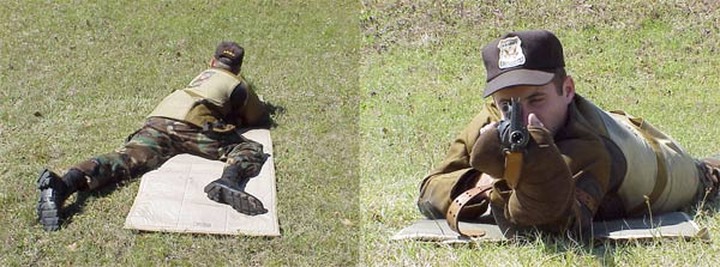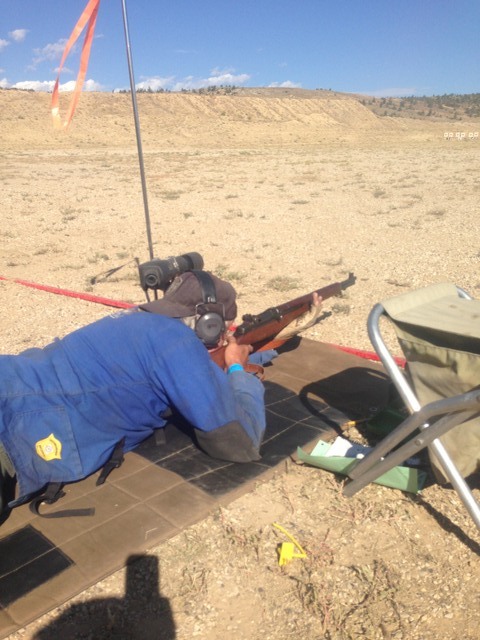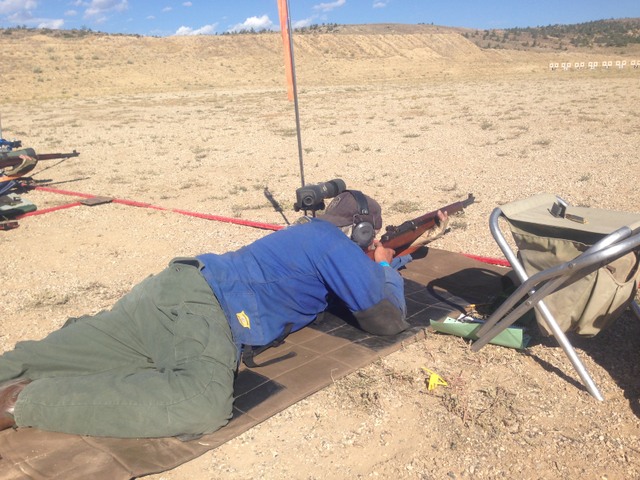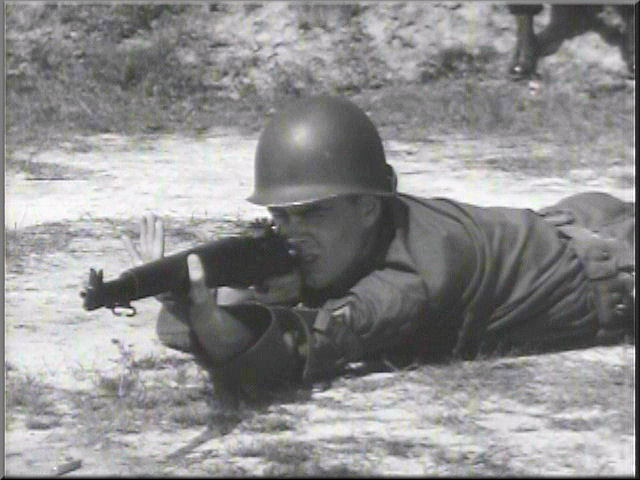I'm going to try to practice the sling hold or whatever it's called to see if it helps to hold my rifle steadier
Excellent idea.
Practice positions using the sling, getting a good Natural Point of Aim with zero muscling the rifle.
Try to get the left or non shooting elbow under the rifle, don't grip the rifle, let the forearm of the rifle rest in the palm of the hand. The sling does most of the holding the rifle. When getting into position, elevation is adjusted by sliding the hand back and forth on the stock.
The butt of the rifle should snap in the shoulder. The shooting hand DOES NOT hold the rifle in the shoulder, the grip should only be used to hold the shooting hand on the rifle so you can press the trigger without disturbing the natural point of aim.
Keep the head as straight as possible, bring the rifle to the head, not the head to the rifle. You should have a cheek weld that resembles a chipmonk look on your cheek. The same place every time. The head must be straight.
The right knee should be cocked up, to take pressure off your diaphragm and give balance and stability to the position.
Now point at the target. You adjust the windage, or move left and right by pivoting on your belt buckle.
Breath natural. You'll press the trigger at the longest natural pause of your breathing cycle. This is the point where you should have your NPA, or at the total relaxed state, at the bottom of the breathing cycle, your sights should be perfectly lined up on the target.
If you're too high, or low, move your left hand back and forth until the elevation is perfect. If your left or right, pivot on your belt buckle until its perfect. I say pivot, I mean just that, move the whole body as you pivot so there will be no muscling to push the sights on the target.
When you think you are perfectly lined up, close your eyes and take a couple full natural breaths, and at the bottom of the breathing cycle, press the trigger. Open your eyes and see if you are still perfectly lined up on the target. If not adjust your position and do it again. Close your eyes, press the trigger and open your eyes to see you're still perfectly lined up.
When you press the trigger, get into the habit of holding it back, don't let it reset until you are fully recovered from your recoil. (though we are still dry firing). You want to develop the habit of hanging onto the trigger as its part of follow through.
If you open your eyes and see you are off the target a bit, DO NOT MUSCLE THE RIFLE BACK TO THE BULLSEYE. Instead adjust our position where there is zero muscling of any kind.
After the rifle fires (or hammer drops while dry firing) the body naturally wants to relax. If you press the trigger, fire a round or dry fire, you should already be at the total relaxed state so there will be no "dropping" the rifle, you're already there, making for perfect follow through.
When you press the trigger, do it smoothly where its a surprise when it breaks. Constant dry fire will develop muscle memory that allow this while firing eliminating flinches.
The most under rated aspect of marksmanship fundamentals is "relaxation". You should be totally relaxed and not have to hold the rifle with muscles, The sling and bone support support the rifle, not muscles.
Also you've heard the term "calling the shot". This is nothing more then taking a mental note of the last thing you've seen the instant the hammer fell.
This is critical to good shooting. Get a note book and draw a picture of the target. Record the "call" or where the sights were the instant the hammer fell.
Do this not only when firing, but while dry firing.
Dryfiring is a valuable tool, and it cost nothing, But dryfiring for the sake of dryfiring means nothing, Each press of the trigger, and each fall of the hammer should be as perfect as you can make it. This develops muscle memory where the aspect of firing the shot, using perfect marksmanship fundaments is natural and done without thinking.
Below are a couple pictures of what a slung prone position should look like.




